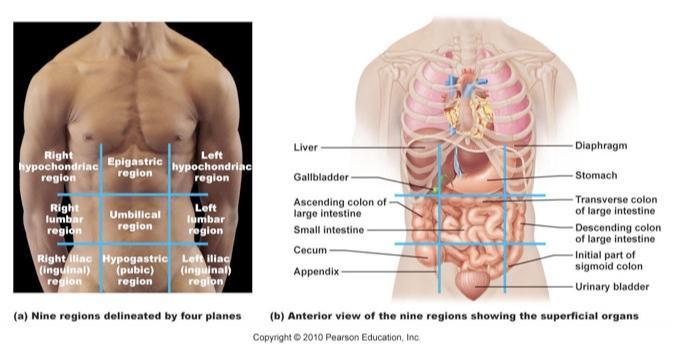Instructions for Side by Side Printing
- Print the notecards
- Fold each page in half along the solid vertical line
- Cut out the notecards by cutting along each horizontal dotted line
- Optional: Glue, tape or staple the ends of each notecard together
Anatomy and Physiology (5th Edition) CHPT. 1
front 1 Anatomy: | back 1 The study of the structure of body parts and their relationships to one another. |
front 2 Physiology: | back 2 The study of the functions of the body, or how the body parts work and carry out their life sustaining activities. |
front 3 Principle of Complementarity: | back 3 What a structure can do depends on it's specific form. STRUCTURE DETERMINES FUNCTION. (This is the theme of the course) |
front 4 CATABOLISM (metabolism): | back 4 Breakdown into simpler substances |
front 5 ANABOLISM (metabolism): | back 5 Synthesis of more complex substances from simple ones. |
front 6 Necessary Life Functions:(8 total) | back 6 1. MAINTAINING BOUNDARIES: Cell Membrane, integumentary system
|
front 7 What are the SURVIVAL NEEDS for the body? | back 7 Nutrients, Oxygen, Water, Normal Body Temperature, Atmospheric Pressure. |
front 8 Name the different levels of Structural ORGANIZATION that make up the human body and explain their relationships. | back 8 Chemicals (atoms, molecules), Cells, Tissues, Organs, Organ Systems, Organisms. |
front 9 Define HOMEOSTASIS and explain its significance: | back 9 HOMEOSTASIS: is the ability to maintain relatively stable internal conditions even though the external conditions are continuously changing.
|
front 10 How do NEGATIVE and POSITIVE FEEDBACK maintain body homeostasis? | back 10 NEGATIVE FEEDBACK: (Most Homeostatic controls are negative) The output shuts off the original effect of the stimulus or reduces its intensity. These mechanisms cause the variable to change in a direction OPPOSITE to that of the initial change, returning it to its "ideal" value. Like a thermostat. (Ex. Blood glucose levels)
|
front 11 Describe the relationship between HOMEOSTATIC IMBALANCE and disease. | back 11 results in disease or aging, due to the body's inability to maintain a stable environment. |
front 12 Describe the ANATOMICAL POSITION. | back 12 Body erect, arms at sides, legs together, palms face up. (Allows proper orientation of the parts of the body that gives us one directional reference point) |
front 13 Use correct anatomical terms to describe BODY DIRECTIONS and REGIONS. | back 13 DIRECTIONAL TERMS: allows us to explain where one body structure is in relation to another.
|
front 14 Use correct anatomical terms to describe BODY PLANES and SECTIONS. | back 14 FRONTAL (coronal): Divides into front and back halves (Like a CT Scan)
|
front 15 Locate the name the MAJOR BODY CAVITIES and their SUBDIVISIONS, and list the MAJOR ORGANS contained within them. | back 15 CRANIAL: Contains Brain
|
front 16 Describe the specific SEROUS MEMBRANES and indicate their common function. | back 16 (like a fist in a balloon) A double layered membrane with fluid in the cavity between layers. It allows organs to move without friction (heart, lungs, etc.) |
front 17 Serous Membranes in Ventral Body Cavity: | back 17 PARIETAL PLEURA: Lines the walls of the thoracic cavity
|
front 18 Name the FOUR QUADRANTS of the Abdominopelvic cavity and list the organs it contains. | back 18  |
front 19 Name the NINE REGIONS of the Abdominopelvic cavity and list the organs it contains. | back 19  |